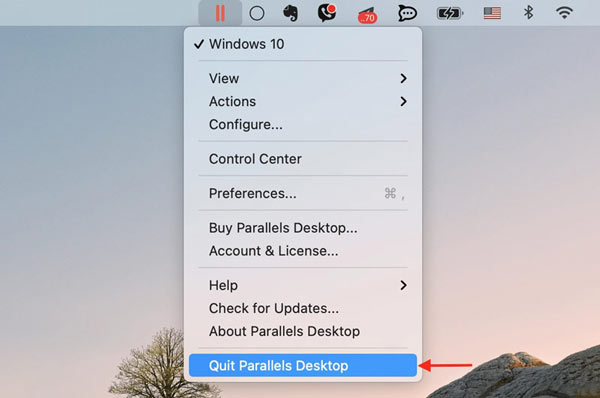
- #Quit parallels desktop mac for mac#
- #Quit parallels desktop mac mac os x#
- #Quit parallels desktop mac full#
- #Quit parallels desktop mac windows#
#Quit parallels desktop mac windows#
If your Windows is encrypted, you will have to resume it manually. The next time you start up Parallels Desktop, you can resume working with Windows from where you left off.
#Quit parallels desktop mac mac os x#
Note: If you are using Mac OS X Lion or later and you shut down or restart your computer, or quit Parallels Desktop, Windows is automatically suspended. When Windows is suspended, you can safely quit Parallels Desktop and resume your progress later. The next time you start Windows or open a Windows program, you resume your progress from exactly where you left off.
#Quit parallels desktop mac full#
Obviously this doesn’t give you the full flexibility of running the Parallels application completely, but if you’re only wanting to run virtual machines without a console, or you just need to quickly fire up a single virtual machine regardless of whether Parallels is running or not, using the Parallels iPhone application can be a real time saver.Shut Down or Suspend Windows Shut Down or Suspend Windows Once you’ve got the iPhone application for Parallels installed, and connected to your Parallels Desktop system, you can quit Parallels and use the iPhone application to start and stop virtual machines: (But we all have one of those, right? 🙂 ) So in order to run virtual machines headless, you’re going to need the iPhone Parallels application, which means you’ll need an iPhone. You don’t end up with so many windows (minimised or otherwise) cluttering up the desktop, and you can still access the virtual machines just how you want. If you run multiple virtual machines in Parallels – particularly if you’re running a bunch of Linux virtual machines, being able to go headless is really useful. So, is this good or bad? I have to say it falls into the category of sheer awesome. Here you can see my dock showing that Parallels isn’t running: I’m not saying that the virtual machine window wasn’t visible – the application itself wasn’t running, the console for my virtual machine wasn’t running, and the virtual machine was happily chugging away.
#Quit parallels desktop mac for mac#
I came back to my Mac Pro this morning and again logged onto the Linux virtual machine via ssh, and ran a bunch of tests without once noticing: Parallels Desktop for Mac was not running. 10 seconds or so later I was able to ssh into it, do what I needed to do, then didn’t think about it again. Last night I needed to check something on one of my Linux virtual machines that I run in Parallels Desktop, and rather than use screen sharing to my Mac Pro, I pulled out my handy iPhone application for Parallels, jumped into the virtual machine list and turned the Linux guest on.

After the patching was completed, it turned out I didn’t need to reboot, and I got distracted so I never got back around to launching Parallels. I had been patching my Mac Pro, and thought one of the patches was going to need a reboot, so of course I shutdown Parallels. I made a fortuitous discovery with Parallels Desktop v5 for Mac overnight.

(This is a local mirror posting of the guest blog piece I wrote for Parallels Consumer Tech Blog.)


 0 kommentar(er)
0 kommentar(er)
